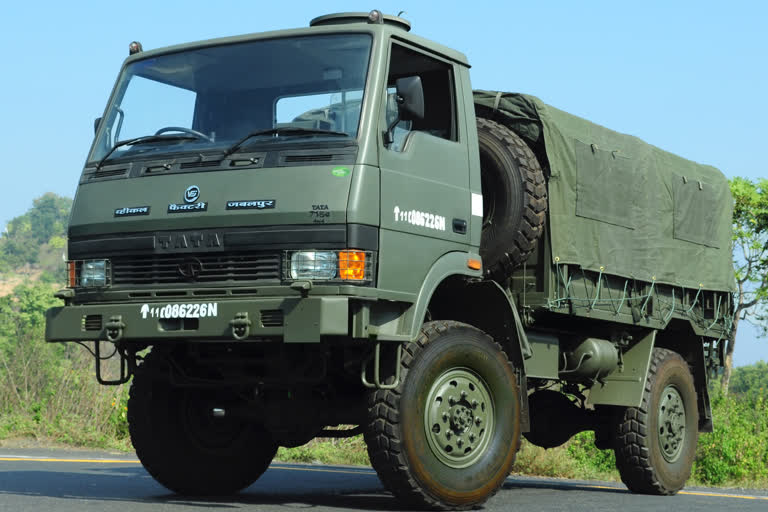New Delhi: A large number of military vehicles, with at least 20 belonging to the Indian Army, and the rest belonging to the Chinese PLA, are lying abandoned for nearly 40 days now in the whereabouts of the Galwan river, not very far from Patrol Point 14 (PP 14), the encounter site of a deadly brawl that took place in the night of June 15.
The Indian Army’s stranded vehicles include the regular one-ton modified trucks and also BMP II Infantry Combat Vehicles (ICVs) while the PLA vehicles include the DongFeng Mengshi, the Chinese version of the American Humvee.
Multiple sources told ETV Bharat that the vehicles were being used to ferry soldiers from both sides towards PP 14 on June 15 and had to be abandoned or couldn’t be driven back from near the river because the water level of the mountain river suddenly rose.
From the Indian side, the river has to be crossed at several points to move towards PP 14, the last point on the Line of Actual Control (LAC) up to which Indian Army teams traditionally patrolled till before the June 15 clash.
With at least 20 Indian soldiers having lost their lives while the PLA casualty figure is unknown, the situation took a turn for the worse with the tension between the two militaries escalating dangerously after the fight.
Succeeding military talks and negotiations at various levels agreed on both sides pulling back a little distance to prevent eyeball-to-eyeball confrontation and setting up a ‘buffer zone’ between the two forces so as to avoid untoward situations as the tempers were still high. It is within the ‘buffer zone’ that most vehicles now lie.
According to one of the sources, consequent to an agreement during the military talks over the border row, the vehicles may now be extricated by both sides ‘very soon’ which may also be as soon as Saturday.
Read:China builds road near Himachal border, extremely close to no man's land
Of the four flashpoints in Galwan Valley (PP 14), Pangong lake (Finger 4), Hot Springs (PP 15) and Gogra (PP 17), the PLA has been obstinate about Galwan Valley and Pangong lake.
On May 5, a fistfight took place between the two militaries near Finger 4 on the northern bank of the Pangong Tso. The PLA had obstructed Indian army patrol teams near Finger 4 and at the same time also positioned itself along with semi-permanent pillbox structures on the Finger 4 ridgeline which commands a good observation area including the Indian post on Finger 4.
While the negotiations have resulted in the PLA stepping back from Finger 4 to Finger 5 along the banks of the Pangong lake in phase 1 of the disengagement and de-escalation process, it has bluntly refused to take down its post at the Finger 4 ridgeline or even to step back from Finger 5.
Extending from west to east, Fingers 4 to 8 are spurs that jut out in a north-south direction from the mountains southwards to the Pangong Lake. While India claims the Line of Actual Control (LAC) runs near Finger 8, China claims territory till Finger 3. In the past, while PLA patrolled from Finger 8 to 4, Indian Army patrolled from Finger 4 to 8.
Read:Govt imposes restriction on public procurement from China, other neighbours
Tacitly admitting that the talks had entered into an indeterminate state, an Indian army source had recently said: “Rebuilding mutual trust after the June 15 (Galwan Valley) incident will take time, therefore, speedy disengagement may be difficult to achieve. More engagement at military levels would be required to achieve complete disengagement”.
Till now, four meetings at the corps commander level have taken place between India and China—June 6, June 22, June 30 and on July 14.
Talks between the world’s two biggest armies have taken place also at corps commander levels and below, special representative levels and diplomatic negotiations to end the faceoff arising from territorial disputes.
Meanwhile, a massive mobilization of much more than 100,000 Indian Army and PLA soldiers besides deployment of heavy artillery and air forces assets has taken place although talks continue side by side to restore the status-quo to a pre-April situation.
Also Read:India prepares for long haul as Chinese refuse to retreat from LAC
